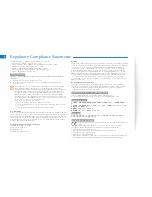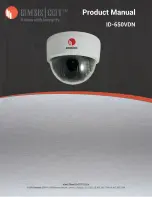
Digital Imaging with Hasselblad
39
FILE FORMATS
Discussions on digital imaging usually include a discussion about the different fi le formats
TIFF (tagged image fi le format), JPEG (Joint Photographic Experts Group), and RAW (raw
data). JPEG is a popular format especially in digital cameras also used by amateurs producing
good image quality when images need not be enlarged drastically.
Hasselblad digital cameras and digital backs record in the RAW format only, which is the
format preferred and used by most professionals. Raw captures RAW data from the camera
sensor and produces an image that is exactly as recorded by the sensor in the sensor unit.
This format provides the best image quality from the camera, which is valuable when the
image needs to be enlarged drastically.
All camera manufacturers have their own versions for the raw format. Hasselblad’s ver-
sion is 3F raw (3FR). This fi le format with lossless image compression reduces the required
storage space by 33%. The 3FR fi les can be converted with the FlexColor or Phocus software
into Adobe’s raw format DNG (digital negative).
DIGITAL BLACK AND WHITE PHOTOGRAPHY
You cannot produce black and white images in the Hasselblad digital cameras or digital backs.
Black and white images must be created in the computer from recorded color images. You also
have the option, and perhaps the most satisfactory solution, to attach a fi lm magazine to the
Hasselblad camera models that are made for use with fi lm magazines and produce your black
and white images on your favorite black and white fi lm as most Fine Art photographers still do.
Although some Fine Art photographers feel that black and white images produced in the
computer can have the same beautiful tonal qualities as those produced on black and white fi lm,
many black and white Fine Art photographers continue using fi lm, develop the fi lm, and produce
the images themselves based at least to some degree on Ansel Adams’ Zone System Theory.
The Digital Black and White Possibilities
The latest developments in digital cameras and printers combined with the variety of soft-
ware programs for processing the image in the computer has created a new interest in black
and white digital photography, especially in the professional fi eld and for Fine Art photogra-
phy. Many critical photographers feel that digital black and white images can come close to,
or even match, the quality of the best black and white fi lm images, if perhaps not today, they
will certainly do so in the near future since new software programs for this purpose are intro-
duced constantly.
These digital black and white images can be created in a much more pleasant atmos-
phere without a darkroom and its messy chemicals. The digital process not only offers all the
known darkroom possibilities for changing the image, such as lightening or darkening the
entire image or certain areas and changing the overall image contrast, but offers possibili-
ties and manipulations that the darkroom photographer could only dream about. As a further
advantage, you can see the results of these manipulations immediately without waiting for an
image to be completely developed. You can also print the fi nal image in a warmer or colder
Summary of Contents for Digital Camera
Page 1: ......
Page 2: ...The Hasselblad Manual ...
Page 3: ...This page intentionally left blank ...
Page 13: ...This page intentionally left blank ...
Page 166: ...Heidi Niemala Photographed for clothing designer with a 150mm lens ...
Page 167: ...Heidi Niemala Editorial portrait with a 150mm lens ...
Page 168: ...Heidi Niemala Photographed with a 50mm lens during a sand storm at White Sands ...
Page 200: ...Jonathan Exley Lifestyle Designer Kathy Ireland Courtesy of kathyireland com ...
Page 244: ...Marco Grob A make up test shot made with an HC Macro 4 120mm lens on an H camera ...
Page 398: ...Close Up Photography on Film or Digital 383 ...
Page 400: ...Jonathan Singer ...
Page 401: ...Jonathan Singer ...
Page 421: ...This page intentionally left blank ...
















































